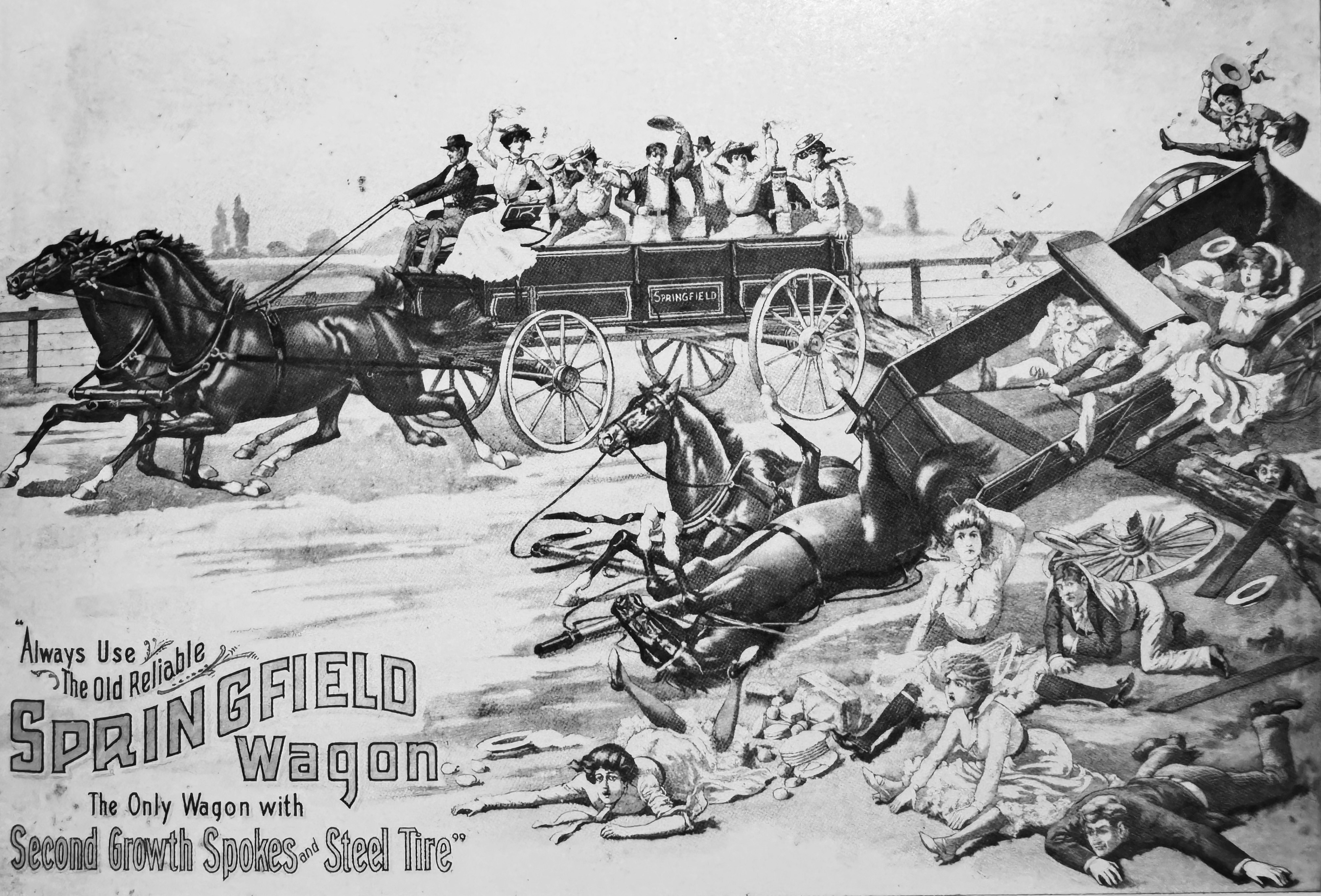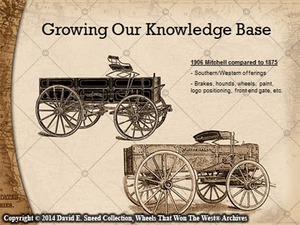Since the invention of the wheel, mankind has continually worked to improve and accelerate transportation. The evolution of these vehicles may look fluid and natural, but the processes of transition and use are not always easy; especially when Murphy’s Law is at work.
Whether rolling on rails, rivers, roads, or trails, if a machine had a wheel, there are plenty of stories recounting failures, breakdowns, interruptions, and all-out wrecks. Looking back over some early U.S. history, we thought we’d highlight a few of those travel experiences. The animated tales may give pause to some of the embellished romance attached to Old West.
Most of the accounts below are from stagecoach and wagon trips in the wilds of California. The last one is from the Rocky Mountain Divide between Montana and Idaho. All are reason enough to be thankful for the advancements and conveniences we depend on today...
STAGE UPSET NEAR VOLCANO. Remarking upon the upsetting of the stage, recently, between Jackson and Volcano, a correspondent of the Amador county Ledger, of Dec. 5th, says,“It was my fortune, with that of others, to be dumped into a pond of water very unceremoniously, by the unexpected, and for these mountains, rather unusual circumstance of the upsetting of the coach. The well known care and solicitude of the driver for the comfort and welfare of his passengers, will at once exonerate him from all blame in the matter; it was one of those cases wherein no foresight common to man could have avoided. There were eleven passengers, including a woman and child. Senator Ketchum and the woman and child being on the lower side, got soaked with muddy water; and the child manifested its dislike for cold baths most unmistakably. I pitied the woman and child very much, as they rode from Cooper’s Mill, where the accident happened, to Pine Grove, in their wet clothes. Mr. Doble, of Volcano, who was also a passenger, had his knee slightly wrenched, so that he still walks a little lame; he was fortunate enough to escape the wetting, as he had the Senator in the water under him. The top of the stage was so broken that the driver got a saw and cut away the wreck, so that we had no longer any shelter over us.”
Sacramento Union, December 8, 1857 *
THE STAGE from Jackson to Folsom, while crossing Dry Creek, March 29th, was carried down stream by the flood, and broken, endangering the life of the driver, Frank Hill, and Nelson Hammond. The passengers had already passed over the foot-bridge. The roads are in a very bad condition, and the idea of traveling is not a very entertaining one. The Nevada stages make their calculations, now, to arrive only in time for the evening train, being unable to connect with the noon. The Placerville stage broke down on Thursday, April 1st, and only arrived in time for the evening train.
Sacaramento Union, Thursday April 1, 1858 *

“On Tuesday, Mr. Fay was coming down the Whisky Creek divide, with a six mule team hitched to an empty freight wagon. Sitting upon his wagon, and being a little careless about making his turns, he cut on a little short, when the wagon run off, turned over three or four times down the slope, taking with it the team, in spite of their scratching for the beaten track. No damage except a couple of broken sideboards to the wagon box. The whole concern was extracted by keeping the downhill route into the old road. Fay says something always happens to him when he gets careless, and that serves him right, too; that instead of sitting cocked up on his wagon, half asleep, he should have been down on his saddle mule attending to business.
Shasta Courier, October 21, 1865 *
A SERIOUS STAGE-COACH ACCIDENT. On the morning of 21st June, (according to the Marysville Express,) as the California stage-coach driven by Daniel Robbins, was ascending the Goodyear’s Bar hill, the bank under the outer wheel gave way, precipitating the coach a distance of about one hundred feet below. The stage fell about twenty feet perpendicularly, and then continued to roll until it finally hung against something and stopped. At the time of the accident there were three passengers in the coach, and strange to say, but one of them was hurt, and he was only slightly bruised. The coach was a perfect wreck. The Campronville and Downieville coach was ascending the hill at the same time, immediately in the rear of the other, and took the passengers to Marysville.
San Francisco Bulletin, Saturday, June 23, 1860 *
“My parents, Charles and Rennie Harder, and my brother, Vernon, moved from Oregon to the Salmon River Country before 1910. Part of the journey was by stagecoach from Red Rock, Montana, over the Continental Divide and down to Salmon. The stagecoach was pulled by six head of horses, as it was a long, hard pull over the mountains. The road down the mountain from the Continental Divide was a long, very steep hill. The stagecoach would be halted at the top of the Divide and the men would cut a tree and tie it on behind the stagecoach to act as a drag, to help brake the coach down the mountain. On my parents’ trip, the tree broke loose part way down the mountain and the horses could not hold the stagecoach back, which caused a runaway. One horse fell down and was dragged.
My mother would tell of this experience, and shrug her shoulders and shake as she said, “Oh, that was terrible! Vernon was just a baby and I thought none of us would survive. It was really terrible.”
As told by Hubert Harder, Centennial History of Lemhi County, Vol. 1

No matter the era or type of vehicle, there are all types of reasons for accidents. As with the age-old accounts above, road conditions,brake issues, flooding, and inattention still cause problems with transportation today.
Looking at the last story above, if you’ve ever had the unfortunate experience of sitting behind a runaway team, it’s not hard to imagine the terror described there. The western setting of that account is the Idaho side of Lemhi Pass. Even today, while much improved, the dirt route is still steep and narrow, with no guardrails and a long way down if someone slipped over the edge. You definitely don’t want to be careless, inattentive, or drive too fast. Coincidentally, this is the same pass that Sacajawea led Lewis and Clark through in 1805. One other note of interest... the runaway coach in the last story has survived and is part of the Wheels That Won The West® collection.
Hope your week is going well. If you have a question or topic you’d like to see covered or, perhaps, have an interesting piece of wood-wheeled history, please drop us a line. We’d love to hear from you.



